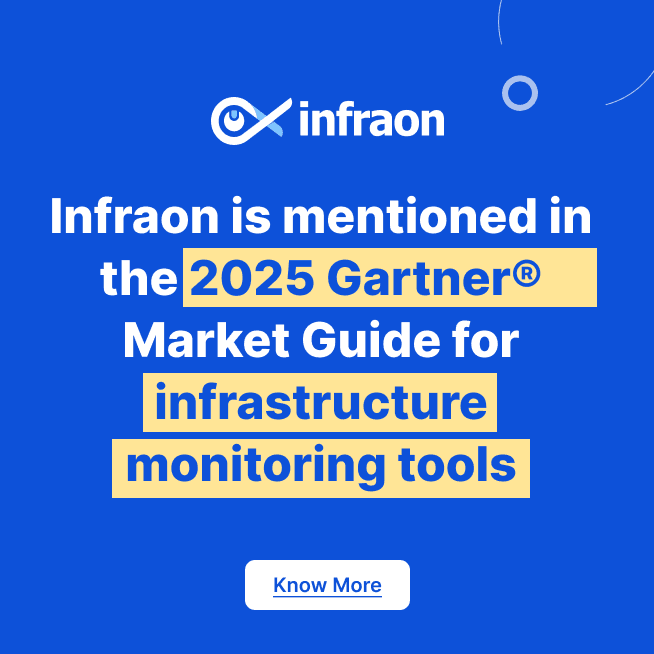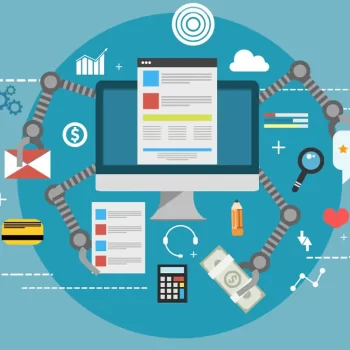Modern IT environments span physical servers, virtual machines, cloud platforms, and containerized services. The only way to maintain performance, uptime, and accountability across that landscape is through infrastructure monitoring.
This blog looks to define what monitoring IT infrastructure really means, how it works, the types of monitoring, common challenges, benefits, and how to choose the right tools.
What is Infrastructure Monitoring in IT?
Understanding IT System Monitoring Across Environments
IT system monitoring tracks the performance, availability, and usage of infrastructure components across data centers, virtual platforms, and cloud deployments. It helps teams understand what’s happening in real time, detect trends, and respond to anomalies before they affect users.
Monitoring IT Infrastructure: Definition and Scope
IT infrastructure monitoring covers the health of servers, network devices, storage systems, and services that support applications. This includes CPU usage, memory allocation, disk health, network latency, and service availability. Monitoring also involves dependencies between these layers.
How Infrastructure Monitoring Works in Practice
Agents, SNMP traps, APIs, and remote scripts collect raw metrics from infrastructure components. This data flows into a central dashboard, where it’s processed, visualized, and acted upon. Alerts are triggered when thresholds are crossed. Logs and events feed into root cause analysis tools.
Types of Infrastructure Monitoring
By Monitoring Method
- Agent-based: Installs lightweight software on each node
- Agentless: Collects data via remote protocols (e.g., WMI, SSH, SNMP)
- Synthetic: Simulates user interactions or network transactions
- Passive: Collects logs, flows, and events already generated by devices
By IT Infrastructure Layer
- Hardware monitoring tracks servers, storage units, fans, and power supplies
- Network monitoring handles switches, routers, firewalls, and bandwidth flow
- Virtual infrastructure monitoring focuses on hypervisors and VMs
- Cloud monitoring integrates with public and private cloud APIs
By Monitoring Focus
- Performance monitoring checks throughput, latency, IOPS, and transaction times
- Availability monitoring verifies uptime and responsiveness
- Configuration monitoring detects drift or unauthorized changes
- Security monitoring correlates anomalies, login patterns, and threat signatures
Common Challenges in IT Infrastructure Monitoring
Managing Distributed IT Systems
Many IT environments span multiple data centers and cloud regions. Ensuring consistent visibility across such environments is difficult without unified IT monitoring tools.
Contextual Monitoring and Troubleshooting Complexity
Raw alerts without context create noise. Teams need to understand cause-effect relationships between systems. Cross-stack dependency mapping becomes critical for troubleshooting.

Key Benefits of IT Monitoring and Infrastructure Insights
Early Detection and Proactive Issue Resolution
With constant visibility, teams can detect system stress before it causes an outage. IT monitoring reduces MTTR and helps avoid SLA breaches by initiating fixes early.
Efficient Budget Planning for IT Infrastructure
Usage patterns help forecast capacity needs. Infrastructure insights inform hardware refresh cycles and cloud budget planning, preventing over-commitment or under-spending.
Better Resource Allocation and Usage
Tracking CPU, memory, and disk consumption supports smarter load balancing. This improves response times and prolongs hardware lifespans.
Higher ROI Through Continuous Monitoring
When systems perform predictably, business units face fewer disruptions. Monitoring justifies infra investments by maintaining stability, performance, and uptime.
Best Practices for Effective Infrastructure Monitoring
Build a Real-Time Infrastructure Monitoring Dashboard
An infrastructure monitoring dashboard should present status across environments (on-prem, cloud, and edge) in a single pane. Metrics should update live, with visual indicators for failures or trends.
Collect Actionable Metrics for IT Health
Metrics should align with business impact. Uptime, queue depth, session counts, and error rates are more useful than basic ping checks. Prioritize metrics tied to user-facing issues.
Leverage Automation for Scalable IT Monitoring
Auto-discovery, self-healing scripts, and alert-driven workflows reduce manual intervention. Infrastructure monitoring should scale as systems grow, without increasing alert fatigue.
Conduct Ongoing Testing and Optimization
Use synthetic transactions and load tests to identify slowdowns. Refine thresholds and alerting logic based on evolving workloads and team feedback.
Choosing the Right IT Infrastructure Monitoring Software
Unified IT Monitoring Across Systems
Look for an IT infrastructure monitoring software that consolidates data from physical devices, cloud services, APIs, and logs. Avoid using separate tools for each environment.
Multi-Vendor Compatibility and Integration
Environments include switches, hypervisors, and cloud services from different providers. Monitoring software should integrate with all major platforms, without requiring workarounds.
Infrastructure Monitoring Scalability Considerations
Select an infrastructure monitoring software that support high-volume data ingestion, federated deployment models, and role-based access. Growth in devices or metrics should not degrade performance.

Ensure Unified Infrastructure Monitoring with Infraon IMS
Monitoring IT infrastructure is the basis for business continuity, performance, and cost control. Whether managing a hybrid data center or scaling cloud-native workloads, the ability to visualize, analyze, and act on real-time infra data separates proactive teams from reactive ones.
Infraon IMS is a unified infrastructure monitoring software module for comprehensive oversight of IT, networking, cloud, application, and IoT devices. It enables proactive performance management through real-time fault detection, event correlation, and predictive threshold analysis.
Infraon IMS also includes features for configuration management, inventory tracking, IPAM, and automated alarm suppression. With SOC‑2 and GDPR compliance, it helps enterprises ensure reliability, security, and governance across distributed environments
If you need an expert to help customize a powerful infrastructure monitoring solution that meets all your operational demands, please write to marketing@infrao.io
FAQs
What is infrastructure monitoring and why is it important for businesses?
Infrastructure monitoring provides continuous visibility into the performance and availability of IT systems such as servers, networks, and storage platforms. By detecting issues early, it helps prevent downtime, supports SLA compliance, and keeps services running smoothly.
For businesses, this translates to more reliable digital operations, faster resolution times, and fewer disruptions to customer-facing systems.
How does infrastructure monitoring work?
Infrastructure monitoring collects data from hardware, software, and network layers through agents, protocols like SNMP, or cloud APIs. This data includes metrics such as CPU usage, memory consumption, and response latency.
Once collected, the data is processed and displayed through dashboards where administrators can detect patterns, set thresholds, and receive alerts. This real-time insight allows teams to identify and resolve issues before they escalate into service outages.
What are the types of infrastructure monitoring?
There are several ways to classify infrastructure monitoring. By method, monitoring can be agent-based, agentless, passive, or synthetic. By layer, it includes hardware, network, virtual machines, and cloud services.
By focus, it can be performance-oriented, availability-based, configuration-specific, or security-driven. A complete monitoring setup typically includes all of these layers to give teams a unified view of system health.
Can infrastructure monitoring prevent cyber threats?
Infrastructure monitoring is not a substitute for dedicated security tools, but it can support threat detection through anomaly tracking and system behavior analysis. Unusual CPU spikes, unexpected port activity, or failed login attempts across multiple systems can indicate an ongoing breach or vulnerability.
Monitoring adds a layer of visibility that complements firewalls, intrusion detection systems, and security information and event management platforms.
Is cloud infrastructure monitoring different from on-premises monitoring?
Yes, cloud monitoring relies on APIs provided by cloud vendors to extract metrics and logs, while on-prem monitoring often uses agents, direct hardware polling, or SNMP traps. Both require different integration methods but should report to a centralized monitoring dashboard.
Unifying these views is critical for teams managing hybrid or multi-cloud environments, where systems are distributed across data centers and public cloud providers.
How does infrastructure monitoring impact overall business productivity?
Reliable infrastructure leads to consistent application performance, fewer user complaints, and lower downtime across business functions. Monitoring helps teams stay ahead of potential issues, streamline support operations, and reduce time spent on manual diagnosis.
It empowers IT staff to focus on strategic tasks while giving business units uninterrupted access to the systems they depend on every day.





















